
10 Interesting Cassowary Facts and Why We Need to Protect Them
If you're unfamiliar with these secretive, ancient birds or are eager to discover some interesting cassowary facts, this post is for you!
There are three species of cassowary on the planet:
the southern (or double-wattled) cassowary
the northern (or single-wattled) cassowary
the dwarf (or Bennett's) cassowary.
Geographically, these birds live in a tiny part of the world. Sadly, their numbers are rapidly dwindling.
Only the southern cassowary lives in Australia and, confusingly, only in the north – in the tropical rainforests of Queensland.
The southern cassowary also inhabits parts of New Guinea and Indonesia, as do the northern and dwarf cassowaries.
We are lucky to have southern cassowaries visit our property regularly. They are magnificent birds and one of our main inspirations for living more sustainably.
Here are ten interesting cassowary facts to spark your interest in these amazing creatures.
1. A Cassowary Is as Tall and Heavy as a Person
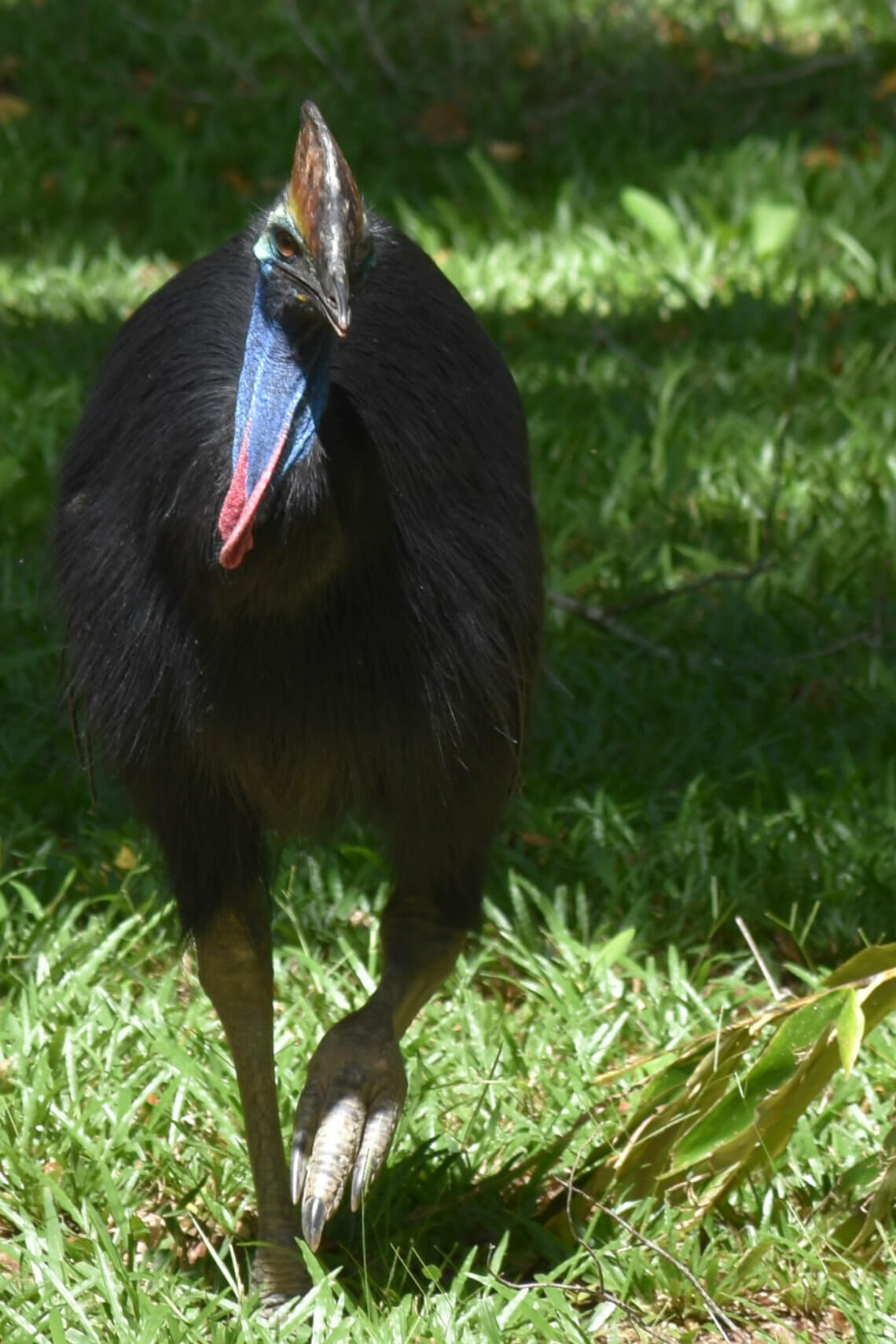
Our first interesting cassowary fact is that they are very tall, imposing birds. They can be as tall as humans, and the southern cassowary is the tallest.
Adult birds range in height from 1.5 metres to almost 2 metres. They are also very heavy, with an average weight of 50kg.
The southern female cassowary is the more dominant bird and is taller, heavier and more aggressive than the male, sometimes weighing as much as 85kg.
A southern cassowary is:
the third tallest bird on the planet
the second heaviest bird
smaller only than the ostrich and emu.
2. Cassowaries Cannot Fly but Run at Speeds of up to 50 km/h
Our second interesting cassowary fact is that they are ground-dwelling flightless birds with tiny, almost non-existent wings.
Their black, coarse feathers help them camouflage in the rainforest and protect them from spiky plants.
Cassowaries have strong, chunky legs with three large toes on each foot. They are excellent at running and jumping and, surprisingly, are also good at swimming!
They can run up to 50 kilometres per hour – this is much faster than you, so don't try to outrun one!
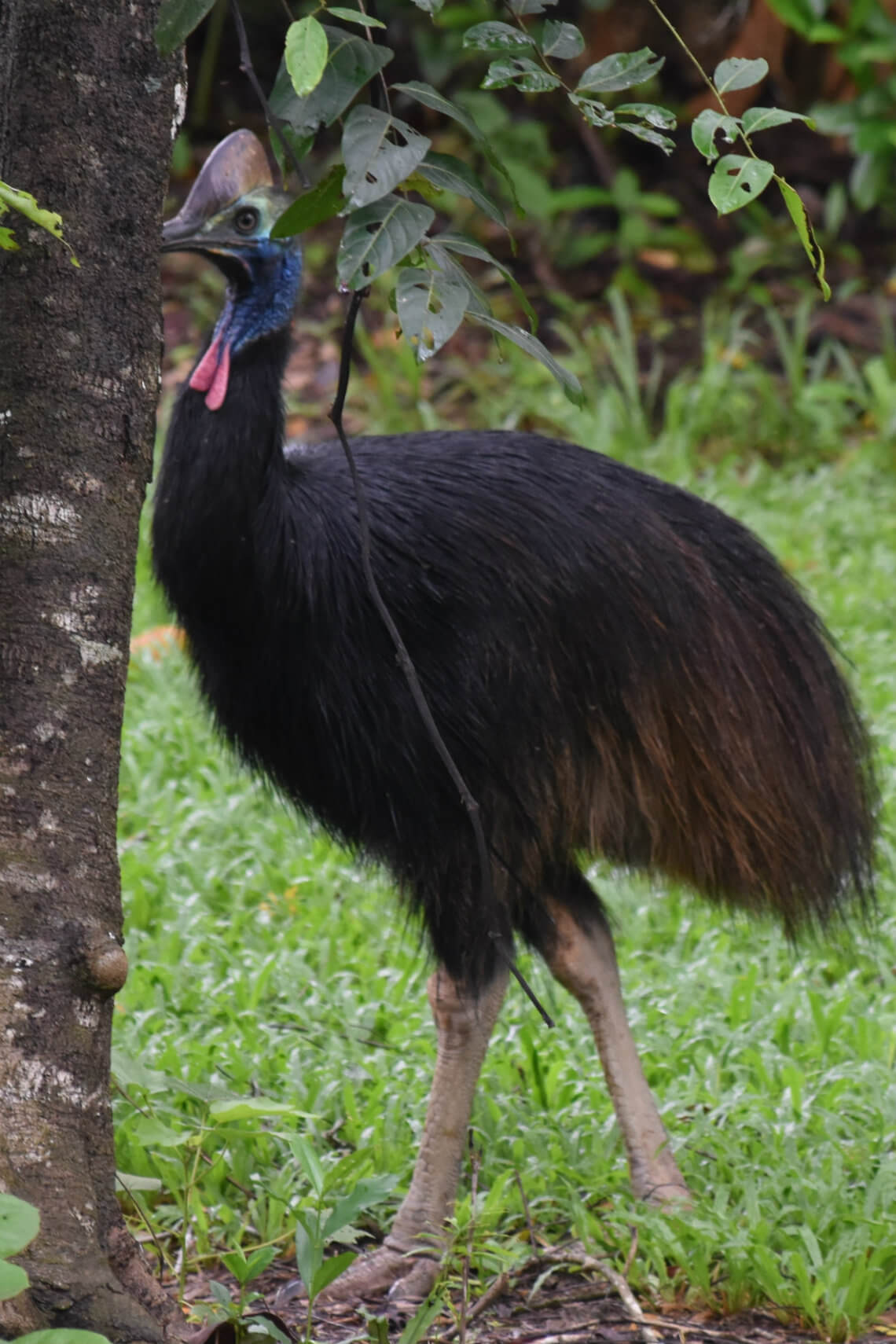
3. Cassowaries' Skin Changes Colour When Agitated
Both male and female southern cassowaries look similar. They have pale blue skin on their heads and dark blue and red skin on their necks. They also have two long, red wattles at the front of their neck.
The female is usually a little brighter than the male.
Our third interesting cassowary fact is that the colour of their skin and wattles can change depending on their mood. The colours become more vivid when they are aroused or agitated.
We don't recommend waiting too long to see if their skin changes colour due to the following interesting cassowary fact!
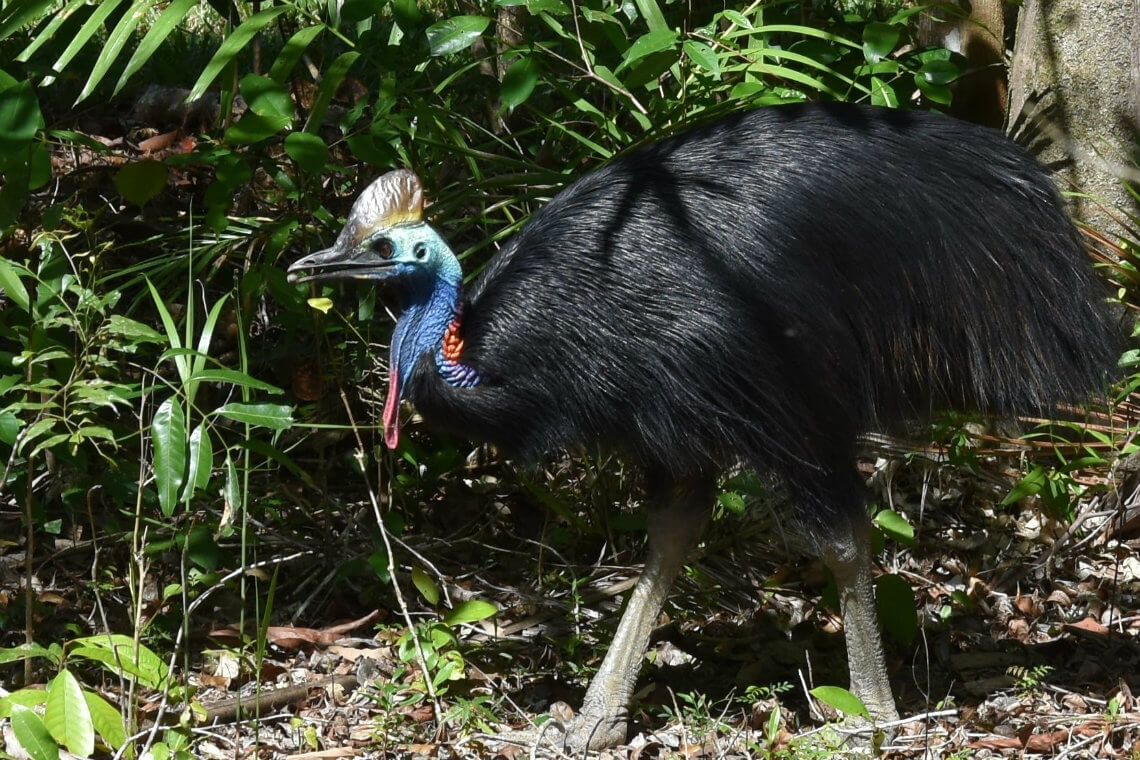
4. Cassowaries Are Australia’s Most Dangerous Birds
Southern cassowaries are usually quite shy but are probably Australia’s most dangerous bird! In fact, they are one of the world’s most dangerous birds (if not the most), so you don't want to mess with them!
Southern cassowaries:
can be aggressive at times
have a large, hard casque on their head
have an elongated spike on their inner toe.
Cassowaries are solitary birds and can become aggressive when defending their territory. They may also be aggressive if they feel threatened, for example, if startled or cornered.
Males are more tolerant of each other than females. However, males will get aggressive when defending their chicks.
As much as we love these beautiful creatures, we keep our distance. They could quickly gut you with their razor-sharp toenail or helmet-like casque should they take a dislike to you. Just saying...😊.
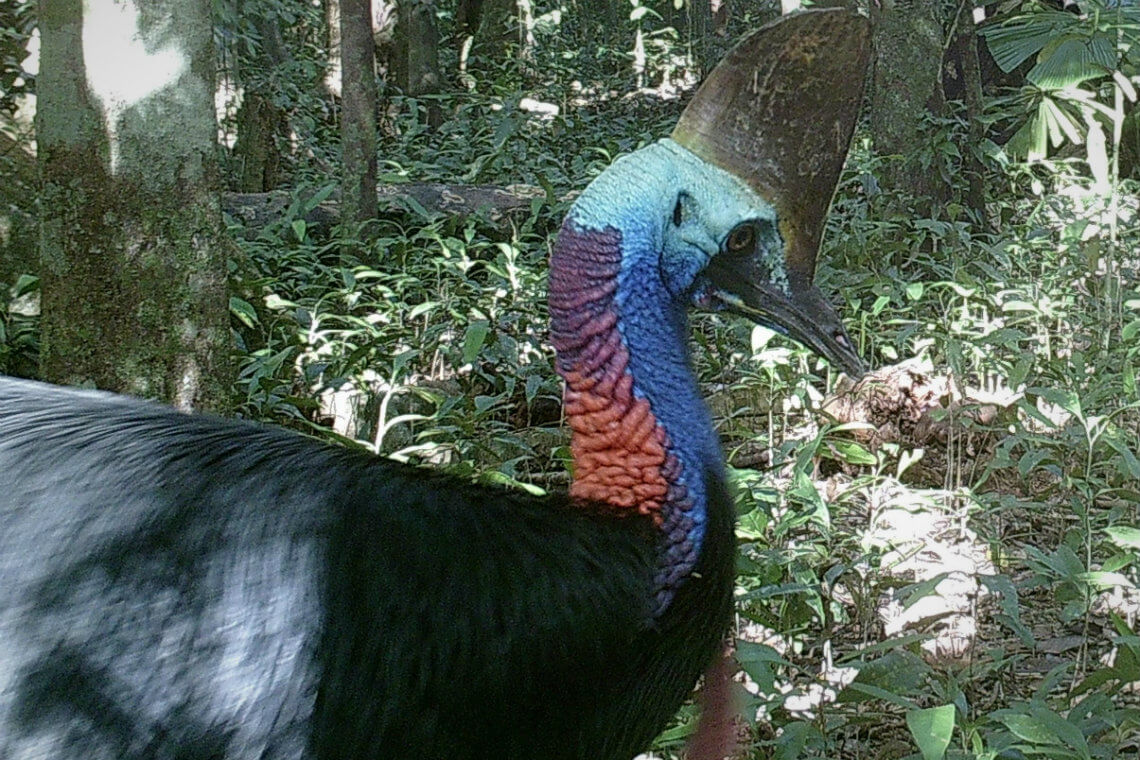
5. A Cassowary Is a Living Dinosaur
Most palaeontologists consider birds to be living dinosaurs. There is no better example of this than the southern cassowary. They certainly look ancient with their scaly skin and large brown casques!
No one is precisely sure what function those prehistoric-looking casques perform either. Biologists speculate that they could:
act as a protective helmet when moving through the rainforest
be a sign of dominance (they grow with age)
be resonation chambers, amplifying the calls of potential mates and rivals.
Some crested dinosaurs had resonation chambers, so that gives some weight to this last theory.
Given how little we know about these birds, it would be a shame to let this living link to the past become extinct.
6. Daddy Cassowary Looks After the Babies, not Mum
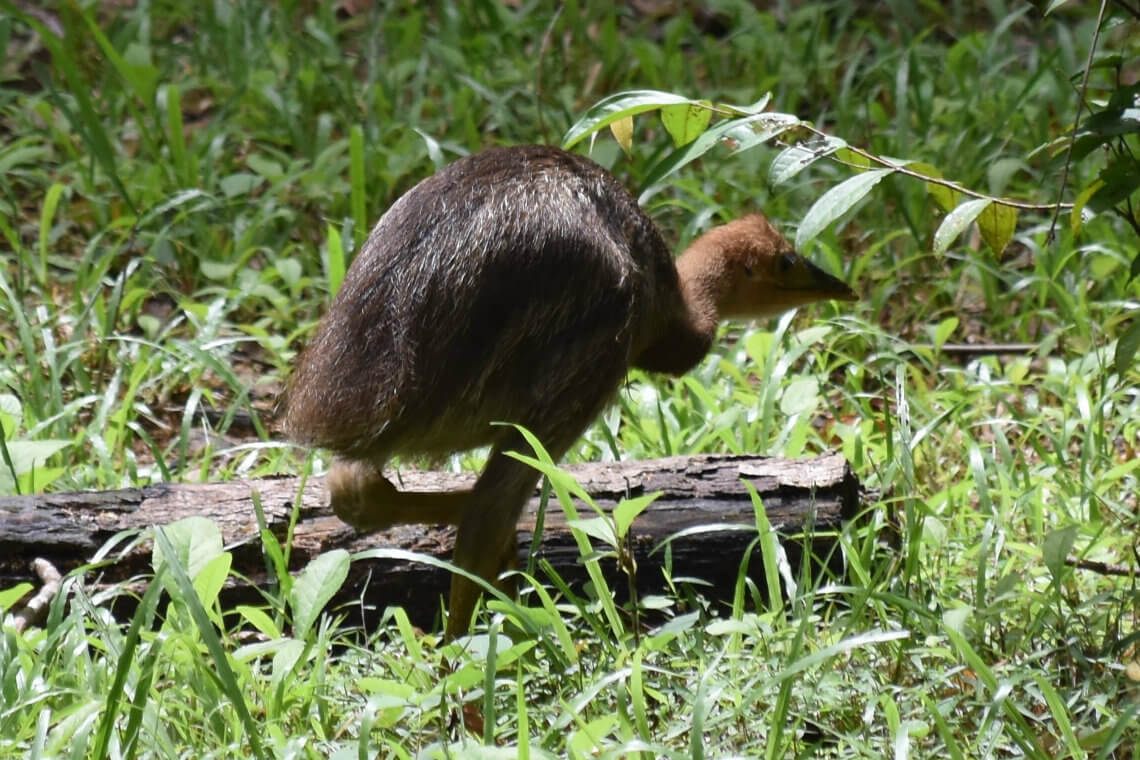
Our sixth interesting fact is that the male cassowary raises its young, not the female.
The male:
builds the nest
incubates the eggs for almost two months
raises the chicks for up to 9 months.
The breeding season usually runs from June to October, but this can vary depending on the amount of food available.
The female will lay 4-6 large green eggs in a simple depression in the ground lined with leaves. Once the female has laid her eggs, she abandons them – probably to mate with another male or two!
The male cassowary, however, remains with the eggs until the chicks hatch. Dad often goes without food or water for several months while incubating the eggs.
Baby cassowaries are small and yellowish with black stripes. After three months or so, their stripes disappear, and they turn a yellowish-brown colour all over.
It can take the juveniles 2 to 3 years to develop their adult colours and casque. It takes a few more years before they start to breed.
We have had the privilege of seeing multiple chicks and juvenile cassowaries over the years.
7. Cassowaries Are a Keystone Species of the Rainforest

Our seventh interesting cassowary fact is that they are essential to the rainforest ecosystem.
Cassowaries eat fallen fruit whole, even fruit as large as bananas, and then disperse seeds throughout the rainforest.
Cassowaries are a keystone species because:
they can eat many poisonous plants
seeds travel through their guts unharmed
their scats provide a mini compost pile for the seeds
they disperse seeds some distance away from the parent tree.
Cassowaries mainly feed under trees that have already dropped fruit. They love eating the native olives that grow on our property.
However, they are omnivores and will eat everything, from flowers to fungi and insects. They will even eat small birds, rodents, and fish.
The cassowary regularly eats the poisonous berries of the Cerbera floribunda. As a result, this purple fruit is commonly known as the ‘cassowary plum’.
Many rainforest species, such as the cassowary plum, would become much less common without the cassowary.
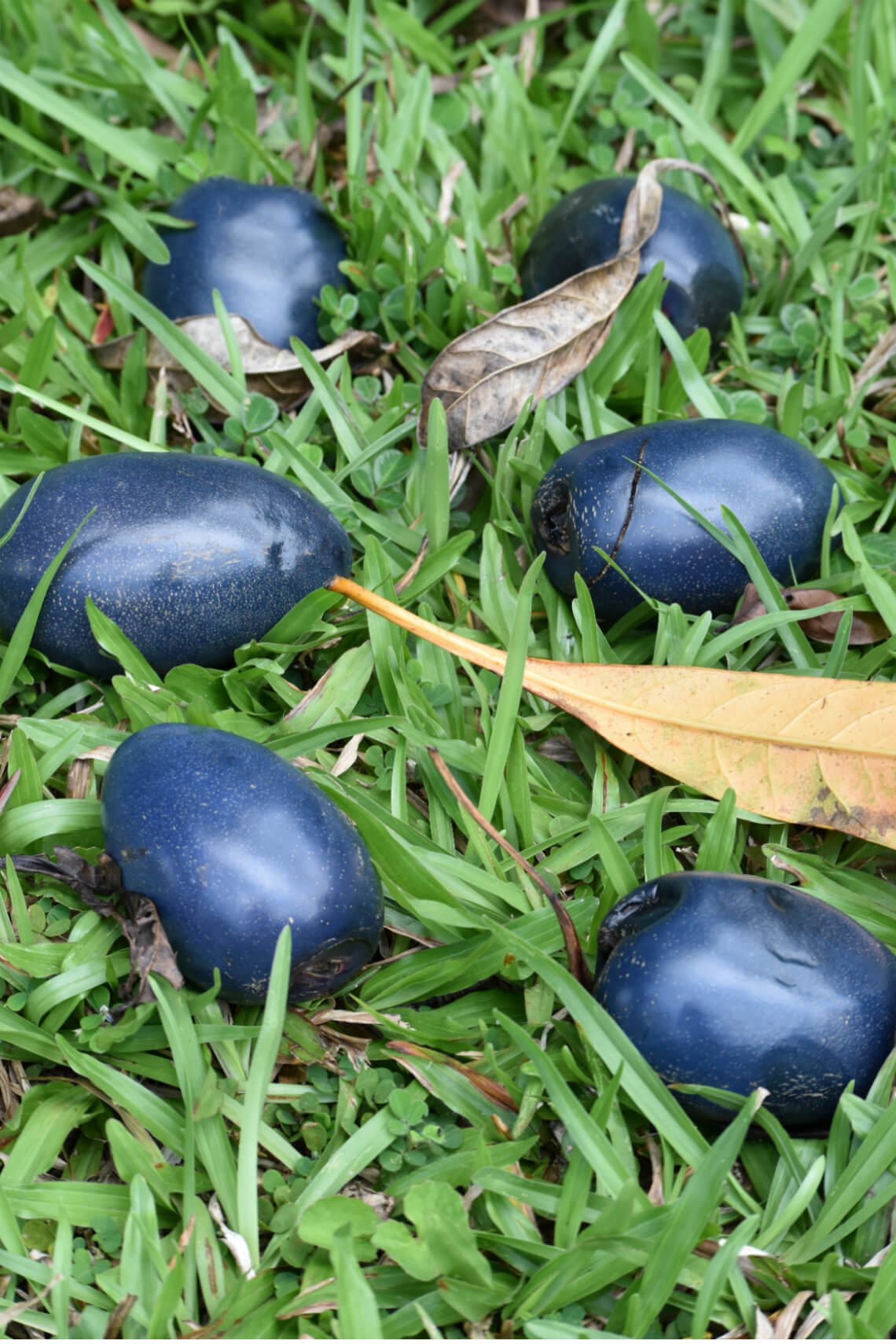
8. A Cassowary Can Live for a Very Long Time
Our eighth interesting cassowary fact is that they can live for a long time.
Cassowaries can exceed 40 years of age in captivity; however, they are more likely to have a shorter lifespan in the wild.
Unfortunately, many cassowaries do not reach adulthood due to the hazards they encounter daily.
Chicks and juveniles can fall prey to dogs. Dogs in packs can even harass adult cassowaries to exhaustion or death. Dogs may also chase or scare cassowaries away from potential food and water sources.
Feral pigs are also a threat to cassowaries. Pigs have a similar diet and compete with them for food. They destroy cassowary nests, eat their eggs, and are potential predators of their young.
Also, feral pigs often contaminate water sources by rooting, defecating and urinating in the water.
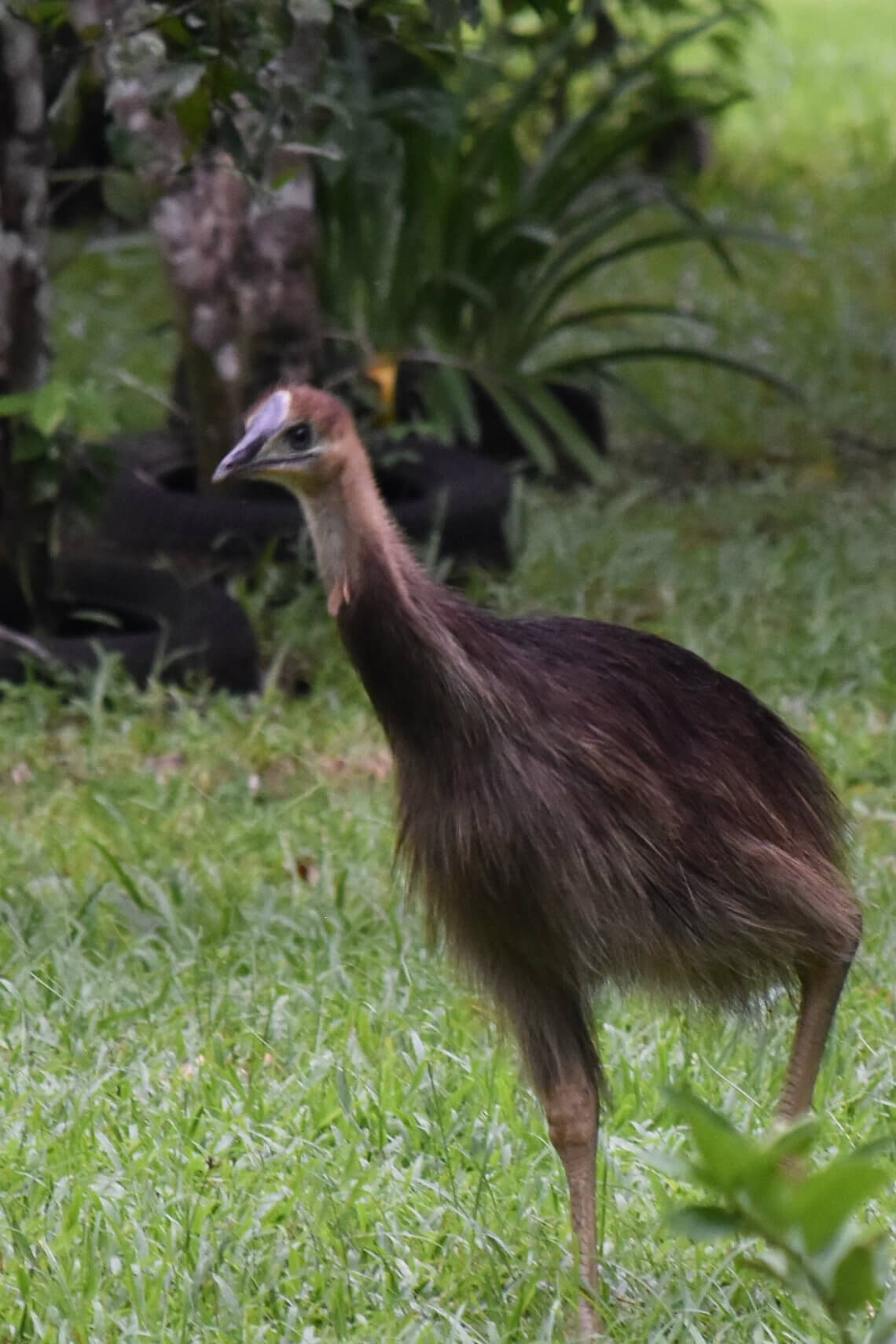
9. Cassowaries Are Endangered in Australia
There are as few as 2000 southern cassowaries left in Australia. Tallies vary because tracking these reclusive, solitary birds through dense rainforests is nearly impossible.
Southern cassowaries are therefore listed as endangered in the Environment Protection and Biodiversity Conservation Act 1999.
Cassowaries, in general, need to be better researched. The northern cassowary and dwarf cassowaries are even less well-researched than the southern cassowary. However, we know that they are also vulnerable and in decline.
Cassowaries are impressive, awe-inspiring birds; we feel privileged to see them so frequently. However, we need to do more to protect them for future generations.
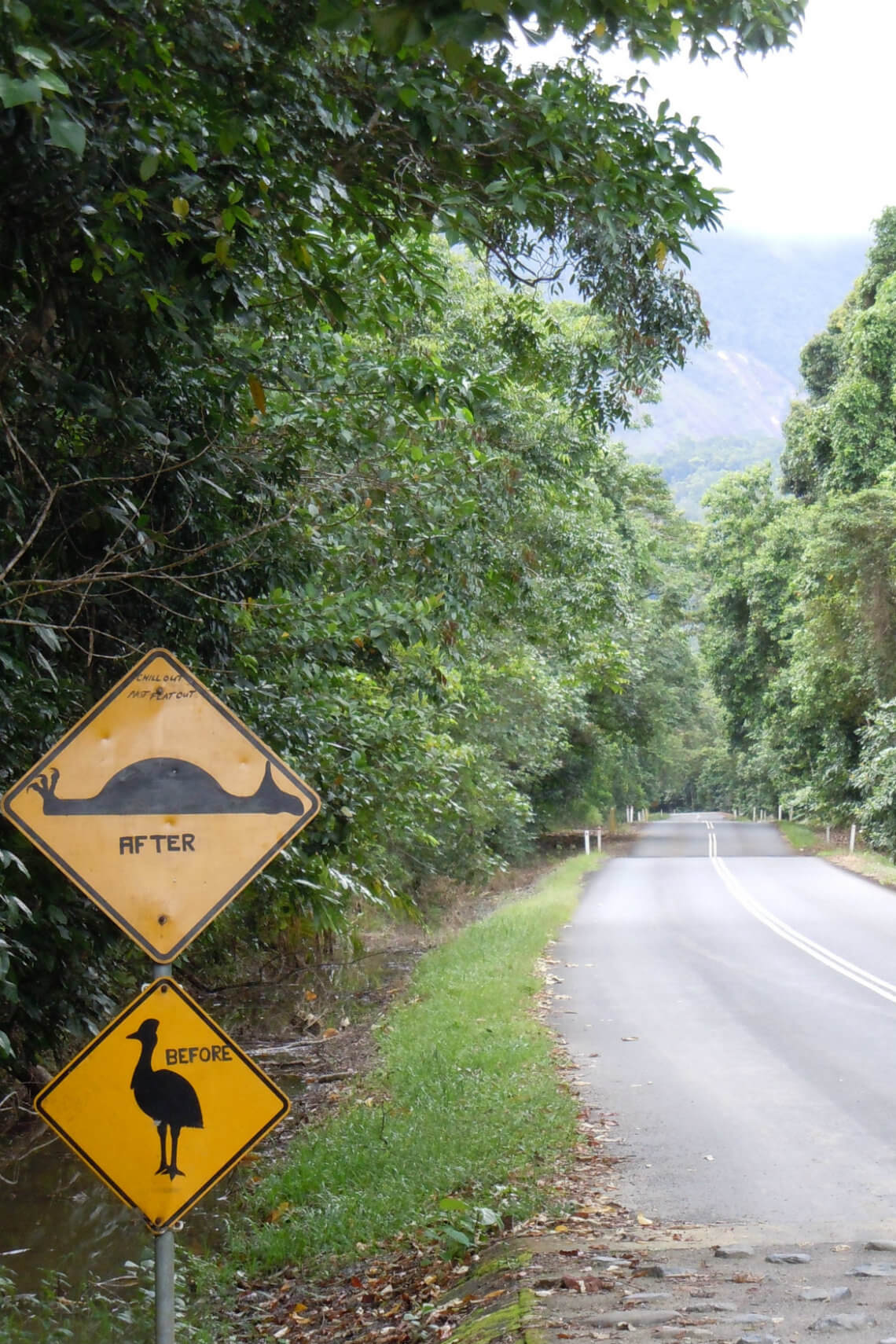
10. The Biggest Threat to These Impressive Birds Are Humans
The main threat to cassowaries is the destruction of their natural habitat, which occurs when we clear rainforests for farming and development.
Clearing rainforest impacts cassowaries by:
reducing the size of their territories
reducing their available food sources
fragmenting the rainforest.
Most cassowaries that lose their habitat due to clearing fail to establish themselves elsewhere. They then usually die of stress or starvation.
Fragmentation of the rainforest also forces cassowaries to walk across roads. Some cassowaries have several roads passing through their territories, and each time a cassowary crosses a road, it risks death or injury.
Cassowaries are slow-reproducing birds with a low juvenile survival rate. Therefore, each road death is a significant blow to their total population.
Fragmentation may also prevent cassowaries from moving away from their birthplace, creating genetically isolated subpopulations.
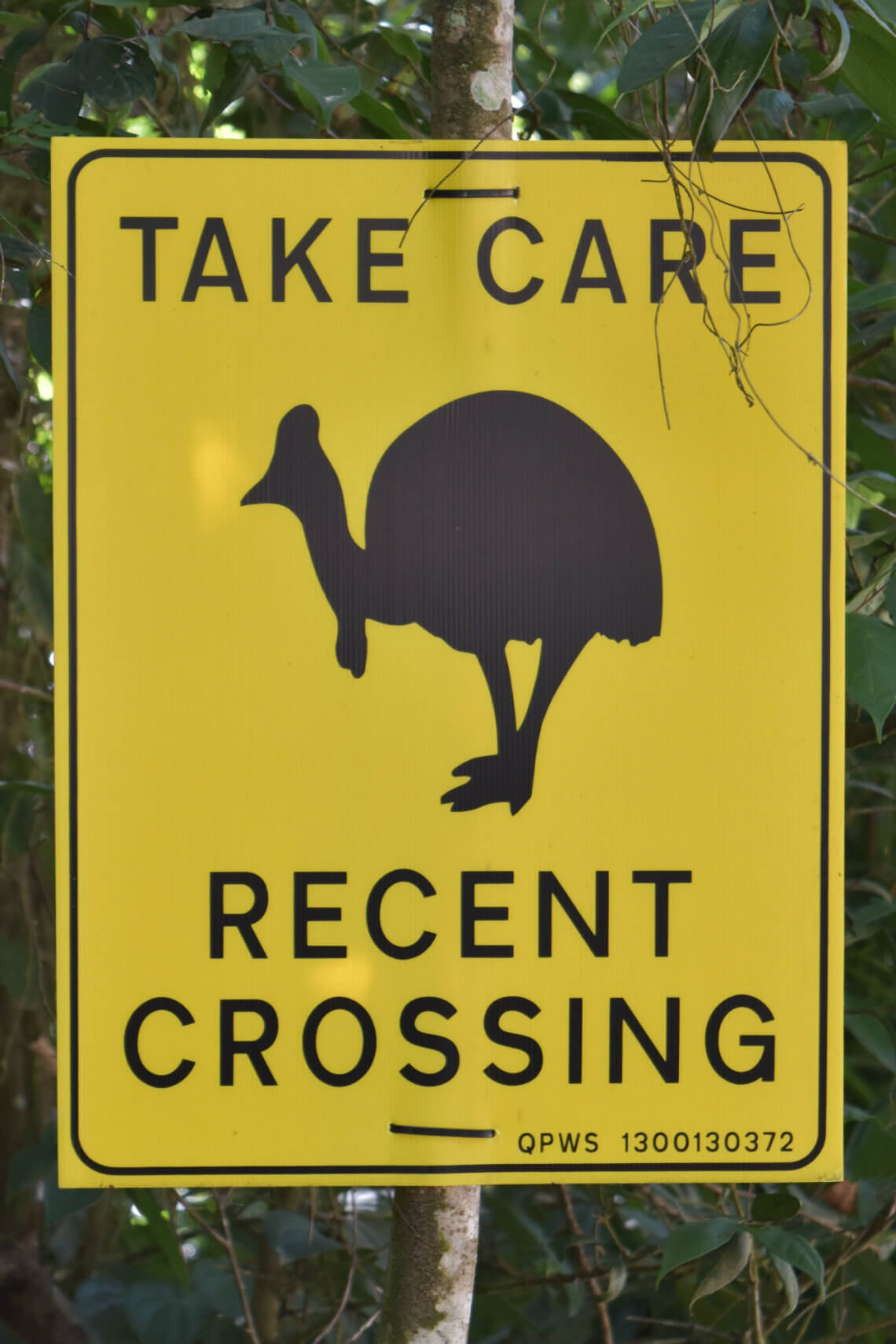
What We Can Do to Protect Them
To ensure its survival, the southern cassowary needs our help.
We need to:
protect the existing rainforests
prevent further deforestation
educate people not to feed cassowaries, which attracts them to human habitation
drive more carefully in cassowary habitat
stop our dogs from roaming free where they might impact native fauna.
If we don't take steps to protect one of our most iconic birds, their numbers will likely continue to dwindle, putting them at risk of extinction.
